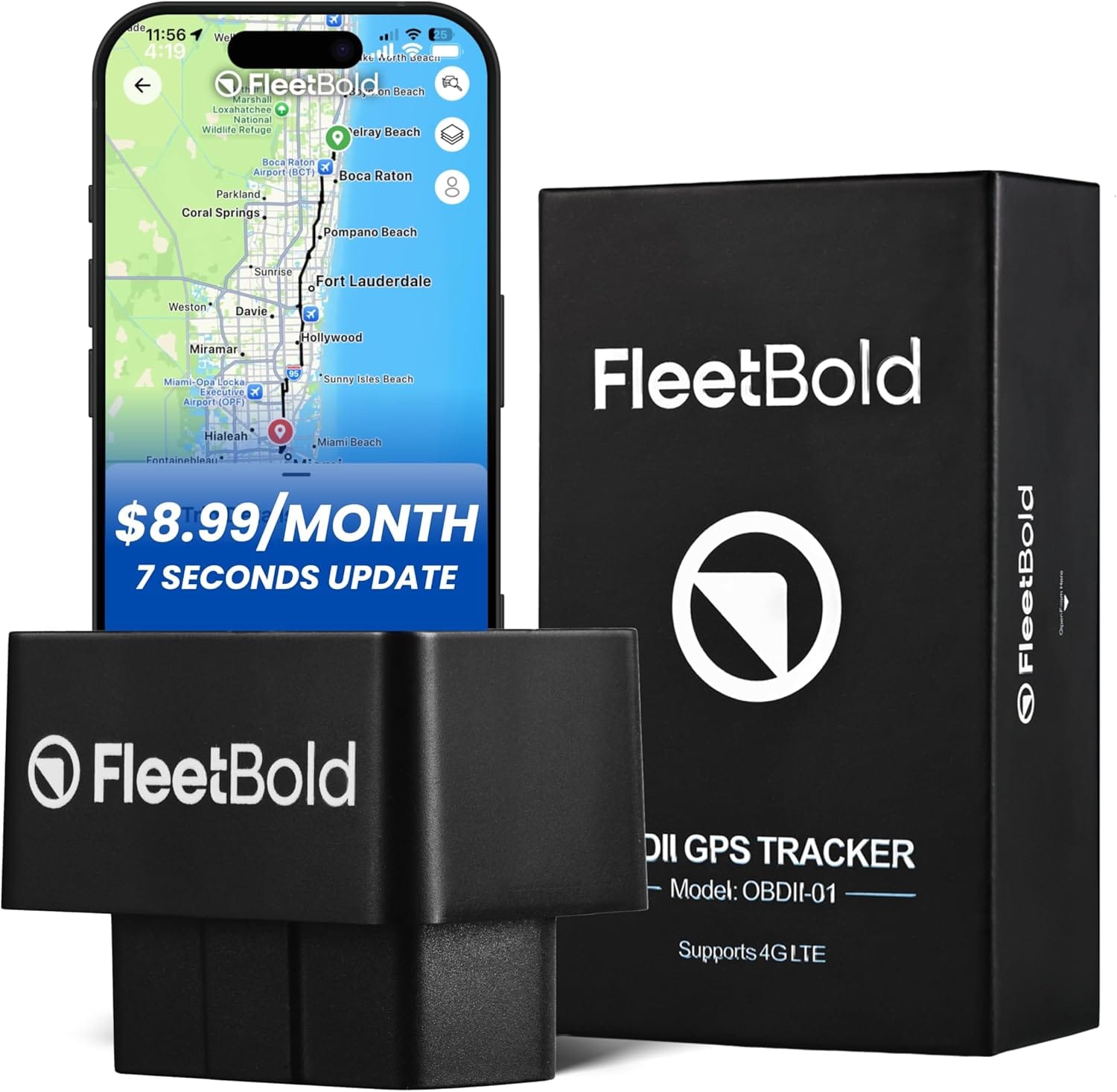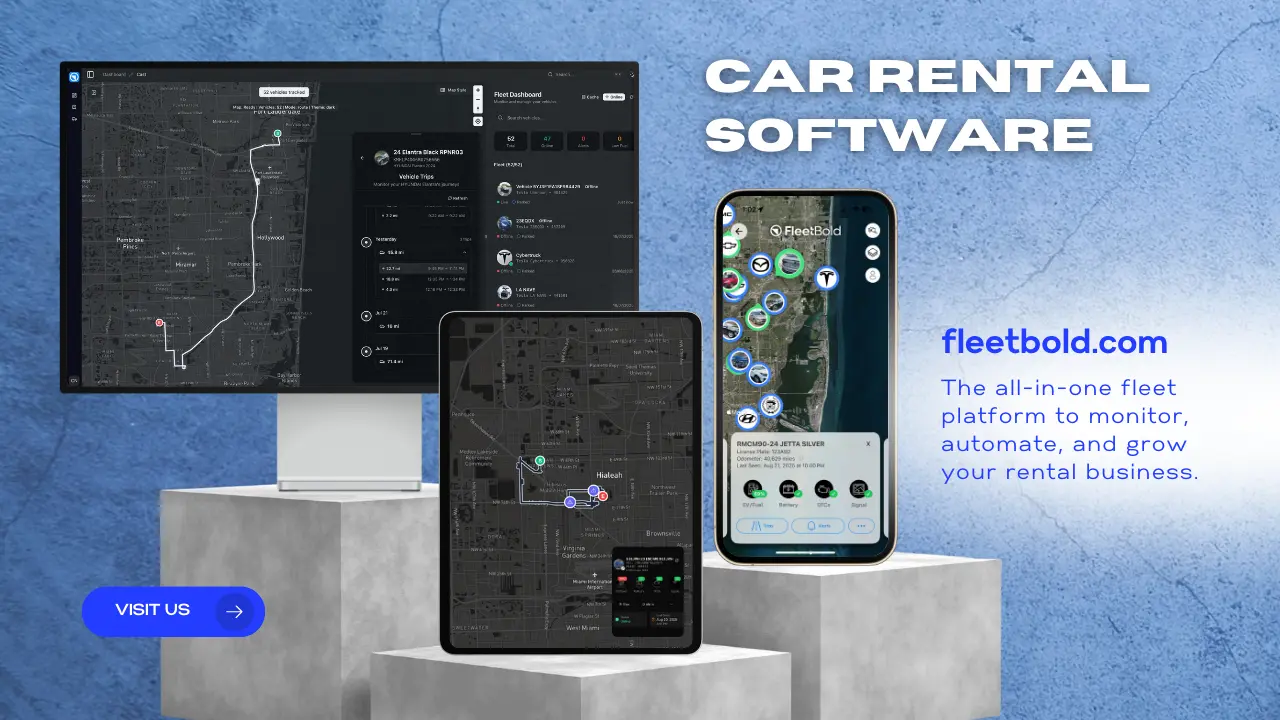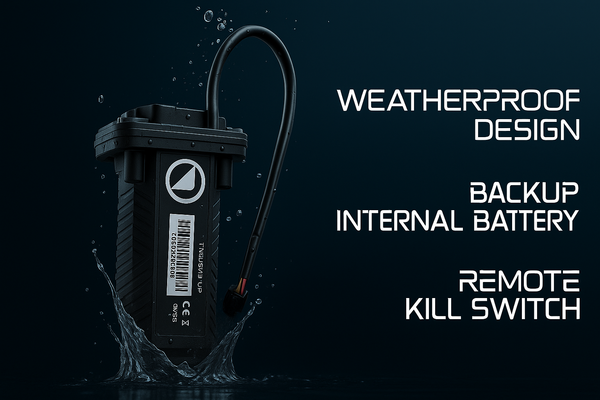GPS Is No Longer Anti-Theft. The Real Truth Exposed!
An honest guide for Turo Hosts and rental fleets. GPS is vital for ops, not a theft shield. Learn the layered steps that protect vehicles.

Compliance note
Educational content for awareness. Nothing here endorses or instructs illegal activity. Always follow the law and platform rules.
Introduction
Let us say it clearly. No GPS is an anti theft system. Criminals use simple tools to blind location and block remote commands and they do it quickly. The purpose of this series is not to glamorize crime. It is to educate operators so they can protect assets with layered security instead of relying on a single device.
At FleetBold we build high technology GPS solutions for mixed fleets. Our devices refresh quickly. Our software is designed for real time operations. Our industrial grade SIM card runs in extreme heat and cold to keep connectivity stable. We integrate cleanly with rental workflows and focus on alerts that actually help you operate day to day.
We are also honest with our community. GPS is vital for operations billing safety checks and evidence. It is not a standalone anti theft tool. The right plan combines professional installation strong identity and handoff procedures smarter parking choices resilient telemetry and disciplined documentation. Learn more at FleetBold.com.

GPS Tracker for Vehicles OBD2 4G Real-Time Tracking -$8.99/month-
For Vehicles, Cars, Sedan, Trucks, Turo Hosts, Car Rentals & Fleet Operators, Plug&Play, Geo-Fence, Trip History, Smart Alerts. Global Coverage
What GPS does well
GPS is still the backbone of fleet visibility. It is unmatched for
• live operations awareness and dispatch
• accurate mileage billing and late return management
• maintenance timing and odometer integrity
• safety checks such as battery alerts tire pressure and harsh events when supported
• evidence for claims reports and customer service
Why GPS alone is not anti theft anymore
• Criminals can block the radio link that GPS and commands depend on
• A short blackout is enough to move a vehicle to covered storage or a dead zone
• A handheld GPS Locator can reveal a hidden tracker in minutes
• Remote immobilize and unlock require an open path and that path disappears during interference
• Concealment slows a motivated attacker but does not stop one
How thefts unfold today
- Target and timing
Unattended lots after hours returns predictable pickup windows - Access
Weak handoffs or poor identity checks open the door for contactless access or social tricks - Blackout
A jammer blinds GPS and data so maps stop updating and remote actions time out - Sweep
A GPS Locator helps find the tracker and any obvious cabling - Relocate
The car moves to a shielded bay or dead zone and work continues without pressure - Aftermath
Plates modules and identifiers are handled later and every hour makes recovery harder
Layered security blueprint
Think in five layers you control. People Process Place Technology Evidence
People
• Train staff to recognize abnormal telemetry rushed handoffs and risky guest behavior
• Give explicit permission to pause a handoff when data looks wrong and define the escalation path
• Provide real scripts that staff can use without guessing
Process
• Use structured pickup and return flows with full identity and trip photos
• Keep all guest communication inside the platform
• Shorten unattended windows and avoid predictable patterns
• Run a monthly review to spot repeat dark spots and repeat behaviors
Place
• Prefer monitored lots with stable coverage lighting and cameras
• Plan entry and exit angles so plates and faces are visible
• Rotate locations for higher risk vehicles and avoid isolated corners
Technology
• Use professional installation for hardwired trackers and verify power quality
• Diversify telemetry where possible across carriers and form factors
• Treat remote commands as convenience not control and assume there will be periods with no live data
• Enable useful alerts only late return battery low device offline reconnect events and avoid noisy configurations
Evidence
• Keep clean logs booking data identity artifacts photos timestamps
• Export telemetry for any incident window and store it in a single case folder
• Maintain a standard incident template so your reports and claims are consistent
Placement reality and installer guidance
Work with a certified installer. Goals are reliable power clean radio performance protection from heat and vibration and low casual visibility. Installers usually prefer interior protected locations with a path through glass or plastic. Never interfere with airbags or safety systems. Important reality check. No location is safe from a determined sweep using a GPS Locator device. Placement is one layer only. It improves uptime and deters casual tampering but it does not make the system invisible.
Risk scenarios and recommended responses
Contactless pickup in a low coverage corner
• Move the pickup to a monitored area with consistent coverage
• Shorten the pickup window and verify identity and trip photos
• If telemetry is abnormal pause the handoff and escalate
Vehicle goes dark two minutes after pickup
• Switch to incident mode immediately and document the exact time range
• Record commands attempted and responses
• Export last known location and booking details and notify law enforcement and insurance per policy
Repeated device offline alerts at the same lot
• Inspect the lot for coverage and camera angles
• Adjust pickup windows and consider rotating the location
• Train staff to escalate faster when that pattern appears again
Return after hours in an unattended structure
• Use very short return windows or move returns to a monitored area
• Require clear return photos and check status within minutes
• If data looks abnormal do not visit the site alone and follow the incident plan
Operating metrics that matter
• Time from last good ping to incident escalation
• Time to assemble a complete evidence packet
• Percentage of pickups in monitored locations
• Percentage of handoffs paused due to abnormal signals
• Recovery rate by lot and by pickup window
• Claim cycle time with complete documentation versus incomplete
Incident templates and training notes
Incident summary template
Title
Vehicle and plate
Booking ID
Guest name and app profile link do not include personal data outside the platform
Time window of visibility loss
Last known location and context
Commands attempted and responses
Evidence list photos logs messages
Actions taken escalation numbers case numbers
Next steps and owner
Script to pause a handoff
We are seeing abnormal telemetry on this vehicle and need a quick verification step. For your safety and ours we will complete the handoff in our monitored location during a short window. Thanks for your patience.
Team training checklist
• Review normal versus abnormal signal patterns using past trips
• Run a tabletop exercise for a dark vehicle scenario first thirty minutes
• Practice the pause script and escalation steps
• Review monthly trend report and adjust lots and windows

Extended FAQ
What does GPS still do best in a rental operation
GPS powers daily operations mileage and billing accuracy safety checks maintenance planning and evidence for claims. It is essential for running a fleet but it is not a theft shield by itself.
Why do criminals beat GPS so quickly
They create a brief blackout that blinds maps and commands. Then they sweep the car to remove the tracker and relocate it to a controlled space.
Is using a jammer legal
Using or selling signal jammers is illegal in the United States. Follow all laws and platform rules.
Can a GPS Locator find a tracker that is sleeping or powered off
Yes at close range many tools can reveal powered electronics or semiconductor signatures. Placement alone is not a complete defense.
Where is the best place to install a tracker
Consult a certified installer for a location with reliable power clean radio performance and physical protection. Keep clear of safety systems. No single location is immune to a determined sweep.
Will two trackers solve the problem
Two independent systems improve redundancy but are not a guarantee. A blackout affects both links and a sweep can find both devices if time allows. Layers across people process place technology and evidence matter more.
Do jammers damage vehicles or devices
No. The risk is operational. You lose visibility and remote control during the interference window.
How should a host respond when a vehicle goes dark
Document the exact time range export logs and booking data record command attempts and results and escalate to law enforcement and insurance according to policy. Prioritize safety and do not confront anyone.
Can cameras or consumer tags replace a fleet tracker
Cameras help with evidence. Consumer tags are not a substitute for professional telematics. Use the right tools and combine them with strong processes.
What alerts are actually useful
Late return device offline reconnect events low battery abnormal movement at pickup or return. Avoid hyperactive settings that train the team to ignore alerts.
How often should patterns be reviewed
Monthly is a strong baseline. Look for repeat dark spots repeat hours and repeat behaviors then adjust pickup windows lot choices and staffing accordingly.
Should remote immobilize be used during an incident
Treat immobilize as a useful option not a guarantee. If the link is blocked the command cannot execute. Focus on documentation and escalation first.
What policies help with prevention
Short unattended windows ID verification trip photos monitored pickup zones and platform only communication. Consistency is more effective than any single gadget.
How do I talk about this with my insurer
Provide a short timeline last known location booking artifacts photos and exported logs for the relevant window. Keep it factual and professional.
What about placing a tracker in metal cavities
Metal can reduce radio leakage but close range methods and inspection still find devices. Shielding is partial mitigation not a solution.
Should I tell guests I use trackers
Follow platform rules and local law. Keep messaging professional and do not reveal placement or technical details.
What training does a small host actually need
Two short modules work well. First is signal basics and red flags. Second is the incident playbook for the first thirty minutes of a dark vehicle scenario.
Glossary
GPS Locator
A handheld detector used to find hidden trackers and other electronics by sensing radio energy close range emissions or semiconductor signatures
Jammer
A device that intentionally interferes with radio communications causing loss of live location and failed remote commands
PNT
Positioning Navigation and Timing services that include satellite based location and time
Layered security
A program that combines people process place technology and evidence so no single point of failure breaks the plan
Conclusion
The truth is simple. GPS is essential for running a fleet. It is not anti theft by itself. Modern thefts rely on speed and predictability. The counter is a layered program you control. Identity and handoffs. Smarter lots. Professional installation. Resilient telemetry. Clear escalation. Strong evidence. Make those parts routine and GPS continues to do what it does best without promising what it cannot do. For tools built for real world fleet operations visit FleetBold.com.






